27 - Angelfish in a community aquarium?
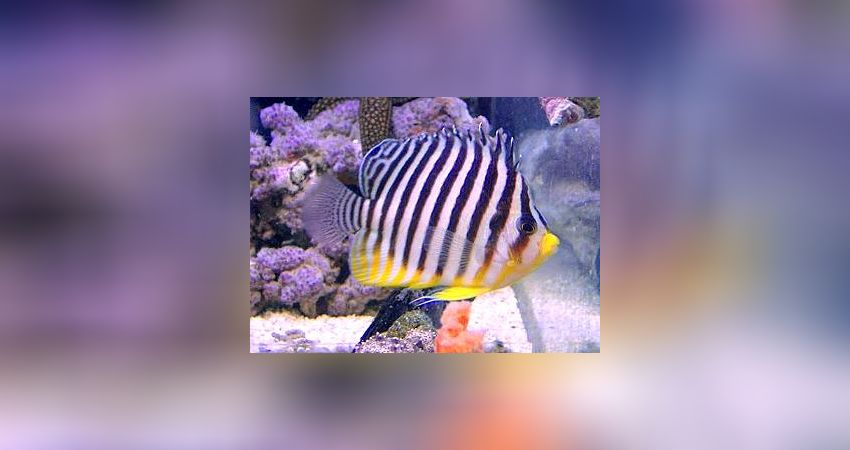
This article deals with the differences between large and dwarf caises, naming species that are more suitable than others.
Fish for the aquarium: Angelfish
After the introduction of soft and leather corals, disc and crust anemones, hard corals SPS and LPS as well as the cleaning aids, we now move on to the different fish species. We are of course aware that it is difficult to make a general recommendation for each fish, because each fish has its own character.
Überhaupt werden Sie als Einsteiger schnell feststellen das es immer wieder neue Üüberraschungen geben kann. Some of these are very touching moments, but others are things you would never have imagined before. These may only be small things, such as the new hermit crab that is supposedly dead in the tank, but in reality has only hung itself.... There are always experiences that make marine aquaristics exciting for years to come. It is usually a hobby that will never let you go. Except, yes, except when it doesn't work out, when more algae infestations or bad experiences spoil the picture you hope to see. Most of the time, however, it is up to your consistency to deal with the issue yourself, for every problem there is a solution. Often you can find hints in the literature, often also in current forums that deal with the topic. There you will find an astonishing number of people who always have new tips to make your life as an aquarist easier.
After the exciting start-up phase with all its ups and downs, you have certainly already taken a look at some books or other media to find your favourite fish? The ones you had to wait so long for ? We are sure that most of you feel the same way, we felt the same way back then as you do today.
Whereby we have to mention that the times were a little different back then. In our early days (1991), for example, there were no or hardly any angelfish and butterflyfish, because they were forbidden at that time. They were not allowed to be imported into Germany. They were only traded under the table! So they mostly swam well hidden in the dealers' basements. A side effect for the aquarist was that they cost two to five times as much as they do today.
Now we know a little more than the aquarists did many years ago, at least due to the learning effect of the years and knowledgeable articles in specialist journals and books, we assume that the level of knowledge is higher today. New aquarists, however, usually do not know much about the animals they would like to keep. But especially in the case of angelfish, you should get to know each animal well beforehand and learn as much as possible about it.
But now we come to the keeping of angelfish in the aquarium:
First you have to differentiate a little, there are large angelfish and dwarf angelfish, which are also called dwarf angelfish. A very significant difference in our opinion, and eminently important. As the difference suggests, the animals of one species grow larger while those of the other remain much smaller. Both species are home to beautiful fish, some of which are also quite suitable for keeping in an aquarium.
Dwarf angelfish:
Centropyge - Paracentropyge
The genus Centropyge now comprises about 32 species, making it the largest in the angelfish family. Dwarf angelfishes are generally well suited to life in the aquarium. Reef structures made of living stones with natural algae growth are an important source of food. In addition, hollows in the stone structures are well suited as hiding places for dwarf angelfish. At this point we would like to make a clear statement in favour of dwarf angelfish, as they are far more suitable for keeping in an aquarium than large angelfish. But wait, there are exceptions here too. That is why we would like to mention the dwarf angelfish right at the beginning, which is usually guaranteed to go for corals. It is actually one of the few outliers from the group of dwarf emperors, as the other species tend to be more reticent about coral damage.
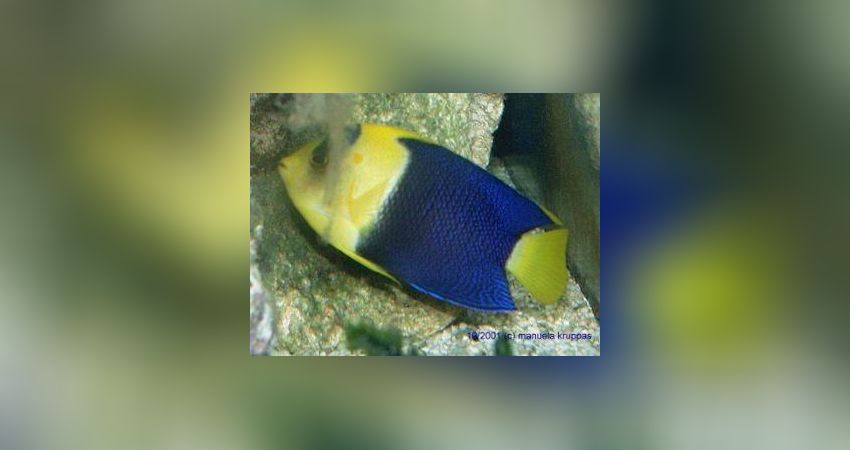
The beautiful Centropyge bicolor in particular is not a coral eater, at least that is the experience of the authors after several years of research. We only know of one case where someone did nothing for 7 years, but then started overnight and never stopped. Certainly, there are also experiences that do not correspond to ours, but that is how everyone makes their experiences in the course of time. This will be the case with all the fish species we want to introduce to you. And with the C. bicolor it doesn't remain with the plucking, it usually really takes hold. At about 13 to 15 cm it grows considerably larger than other dwarf angelfish species. The actual size depends on the space available in the aquarium.
In addition to Centropyge bicolor, the following dwarf angelfish species are known to attack invertebrates:
Centropyge flavissima, C. colini (deep water species), C. tibicen. However, this can never be generalised... this mention should be given to you as information along the way.
We deliberately write aquarium because it is also possible to run a fish aquarium. There it would not be a problem that the fish regard corals as food. Based on the assumption that this series of articles will be read by newcomers, please forgive the following note to the newcomers:
Kaiserfish can eat corals, or at least by tugging at them so much that the corals die.
But undoubtedly not all angelfish do this, especially some dwarf angelfish have the best chance of leaving the corals alone. We cannot make a generally valid statement, but we can at least name a few species and introduce them in more detail.
We will now name a few species that have proven to be quite "well-behaved species" over the last 10 years without frequent coral damage.
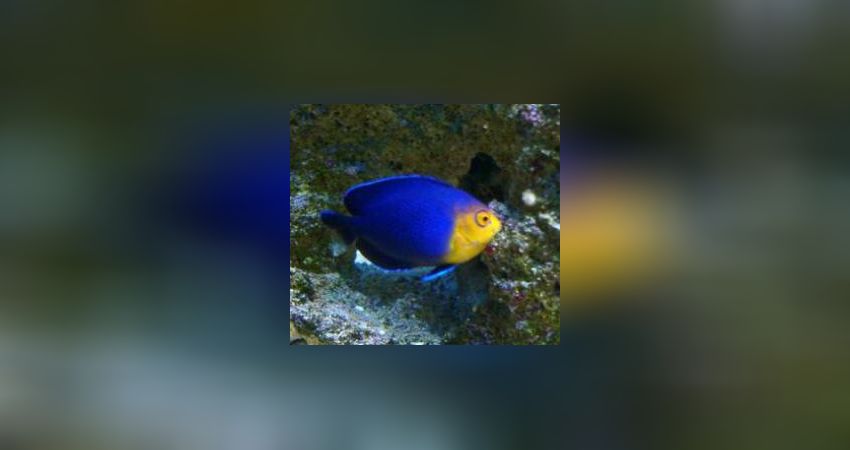
Centropage argi: With a final size of about 6 cm, this is one of the smallest dwarf angelfishes, and also beautifully coloured. The authors find it an excellent fish for the community aquarium. Similar in behaviour to the following Centropyge acanthops. Comes from the Caribbean and, like all dwarf angelfish, needs lettuce or algae to pluck every day. Most dwarf angelfish will quickly eat replacement food (frozen food) without any problems. Nevertheless, they should always get something to pluck.... Iceberg lettuce, Norialgae, Löwenzahn etc.
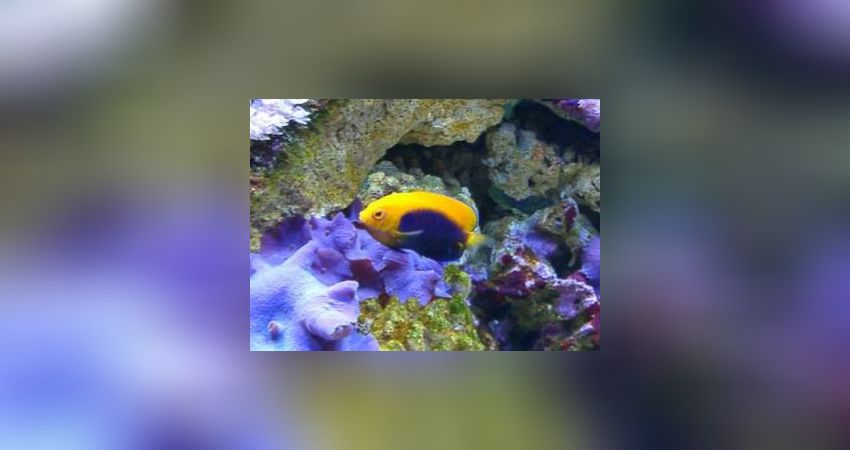
Centropage acanthops:The C. acanthops, which occurs from South Africa to Madagascar, is already wonderfully suitable for the rather smaller aquarium due to its size of 6 - 7 cm. However, we would not keep it below 300 litres in the long run. It can and should be kept in pairs. Of course it is advisable to keep both at the same time. If there is enough food of algae and lettuce, attacks against corals (anyway it only plucks) are almost impossible. Also usually gets along well with other Centropyge species, such as the C. argi. Tends to make fun of newcomers first (hierarchy), but this behaviour is common to all dwarf angelfish.
[picture:][picture:][picture:][picture:][picture:][picture:][picture:][picture:][picture:][picture:][picture:].
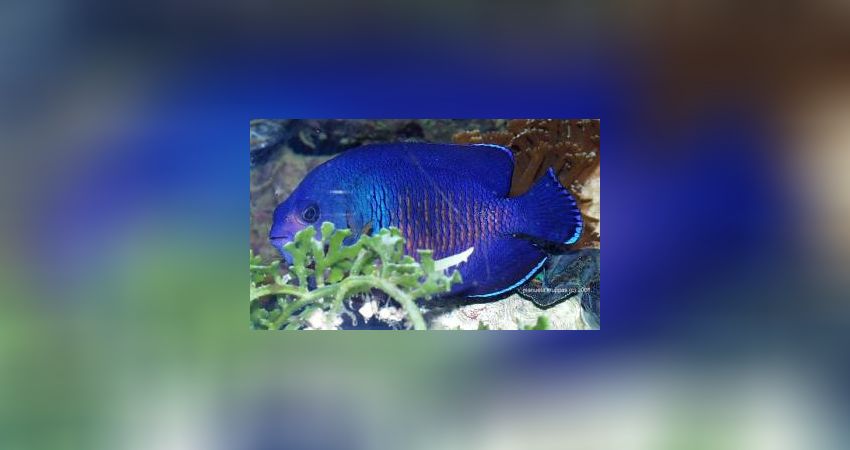
Centropyge bispinosa:One of the authors keeps it as a pair, where one was added even years later. The older one has been in the aquarium for 8 years now, and is still cheerful. A beautiful and rather unobtrusive dwarf emperor. You don't see him that often, but you can't call him shy. With sufficient and varied food (lettuce and algae) it does not attack corals, at least not in our area. Neither plucking nor eating! Tends to suppress newcomers at first, but this subsides after a few days. Perfectly suitable for pair keeping. With a size of approx. 12 cm it remains surprisingly small and is also suitable for smaller aquariums from 500 litres. However, it should be offered many homes, then it is far more trusting.
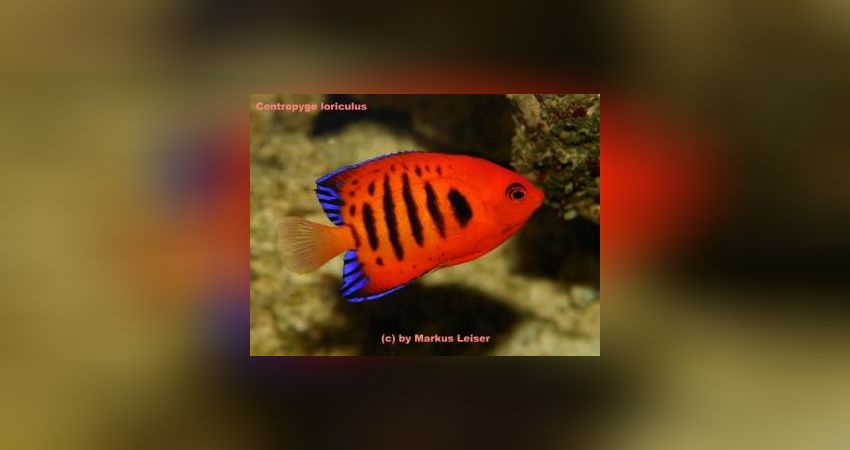
Centropyge loriculus: Undoubtedly one of the most beautiful of the dwarf angelfishes. But also one of those that will surely tug at a Stylophora or Poccilopora. They very seldom eat corals directly, but they don't have much of a problem with fine filigree corals. One of the authors keeps a Pärchen in his aquarium which often works well. Especially when they are used together in different sizes. However, C. loriculus tends to hunt other dwarf emperor species mercilessly. There are exceptions to this. A swim school can make life easier for the newcomer, as the aggression of the old animals will subside over time.
[picture:
[picture:].
Paracentropyge multifasciata: For the sake of form, we should also include it :-) It has recently become more öferal in the trade. Both authors have not kept it so far, but from conversations with other aquarists it seems that it is much more delicate, often it does not easily adapt to the food offered in our aquarium. We would therefore classify it as a food specialist, which probably lives in the natural habitat of swarmers and others. Here you should offer as much good live rock as possible on which algae grow. We don't know anything about coral damage, but you should expect corals to be plucked. Despite the fact that it has recently appeared in the trade, it is not very widespread, and there is hardly any reliable and usable information about its long-term keeping.
As you can see, we already have a few animals from the dwarf emperor family that could be classified as mostly harmless, with a few minor exceptions. There are many more dwarf angelfish that are good to keep in the aquarium, but we strongly advise you to get sufficient information about the respective animal before buying. However, we do not want to withhold one dwarf angelfish from you, even if you have probably hardly ever seen it before...
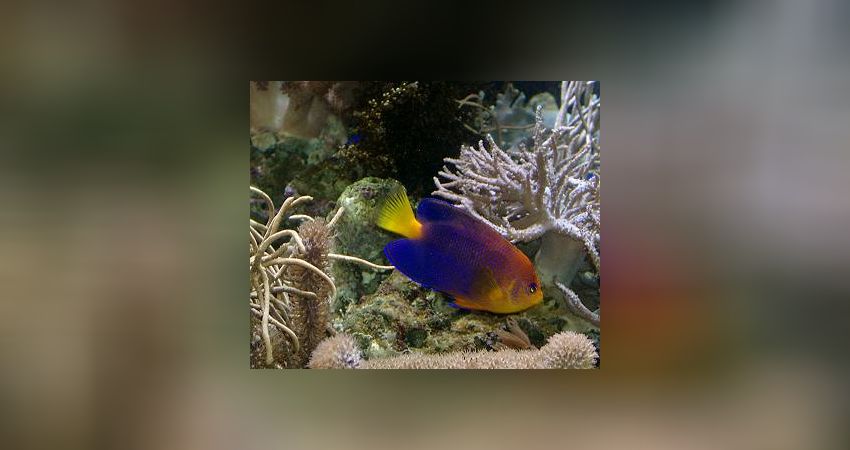
Centropyge interruptpa: We will probably not see it in the trade or anywhere else. This picture was taken at Interzoo 2004, Nürnberg, Germany, at the ELOS stand. C. interrupta grows to just under 17 cm and is thus one of the largest of the dwarf angelfishes. Its occurrence is limited to the Japanese region. Very rare and super expensive, it will probably always remain a dream for aquarists in Europe. However, there are the first successful offspring of this and some other dwarf angelfishes [Baensch 2003], but they will certainly not be affordable at the present time. Nevertheless, Baensch has done a lot for aquaristics, which deserves our utmost respect. C. interrupta has a peculiarity that other dwarf emperors do not show: It eats the faeces of other fish in the reef! However, it belongs to the species that can be kept well, if you can afford it.
Dwarf Emperors are in any case far better suited for a home aquarium already from the size as they stay well below 20 cm.
Finally, it remains to be mentioned that one should keep an eye on all dwarf emperors, Übergriffe gegenüberallen kann man nie gänzlich ausschliessen. But all in all, it is much lower in the dwarf emperors than it is in the following animals, the angelfishes.
Emperor fish:
Apolemichthys - Chaetodontoplus - Genicanthus -Holacanthus -Pomacanthus - Pygoplites
The biggest problem with emperor fish, at least with most large emperor fish, is the expected size. Some reach 30, 40 or 50 centimetres and even more. And that is why you should not keep them in aquariums that are too small. What is small and what is large...? A very difficult definition, and I'm sure everyone has their own opinion. We don't want to throw around numbers and figures here either... but we would like to give you a little clue:
A 15 cm fish that is constantly on the move in a 2 metre tank can be so annoying that the aquarium is considered too small. On the other hand, a 25 cm fish that hardly swims but rather stands and moves only slowly would probably not be considered too big. So everything is always in the eye of the beholder. We have also had to give away fish that have simply become too big, we are not excluding ourselves here. Most of the time the keeper notices that the fish are no longer able to cope with the offered tank size. Over time, one simply develops a sense for it.
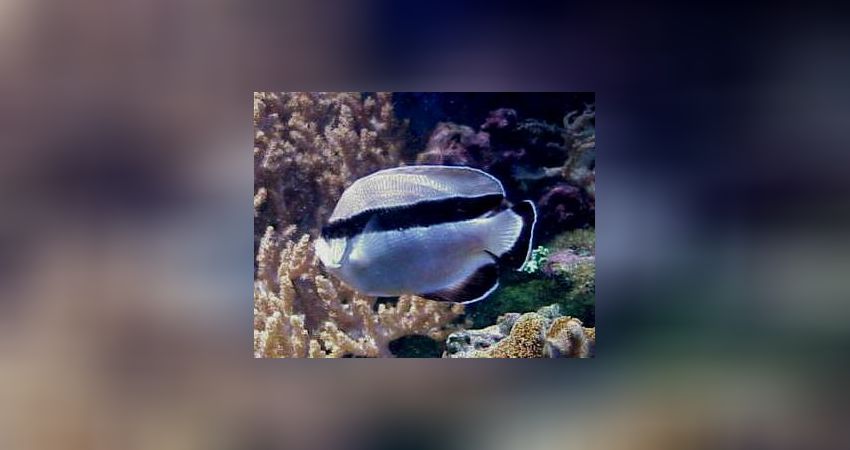
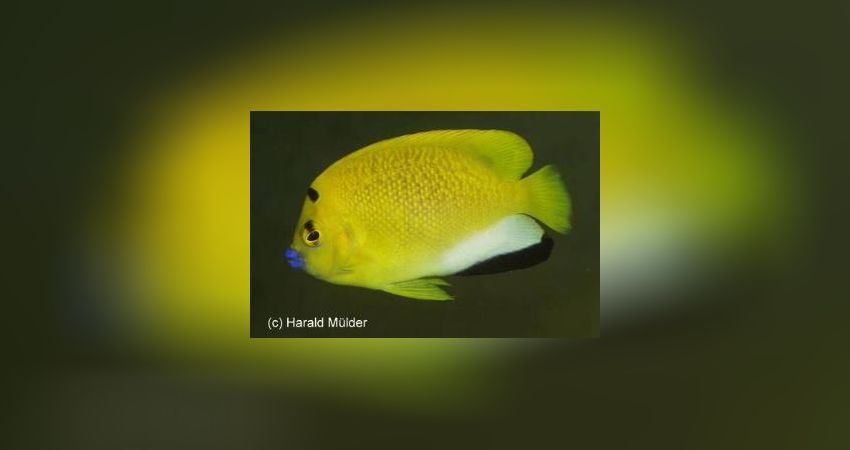
But we consider even 3000 litres of aquarium size to be far too small for an emperor fish that grows to 50 cm! The problem of size is compounded by the fact that some are very tricky to keep, while others are often pure food specialists. Good that there are also species that stay smaller. In general there are some species that can be recommended, some more, others less. A lot also depends on your intention. If you only want to keep certain corals or if fish are more important to you than corals, many things can be realised that are not so easy in a fully stocked coral aquarium.
In the picture above you can see Apolemichthys arcuatus, a food specialist that can hardly be kept in an aquarium. Fortunately it is hardly ever offered. It is one of the fish you should not buy.
With all emperors, whether dwarf emperors or not, one thing is certain:
You can influence a lot yourself. Be it through the tank setup, the swimming space, the variety and constant availability of food as well as the co-inhabitants... all this has an influence on the fish.
Much more suitable than the previous A. arcuatus is Apolemichthys trimaculatus. All emperor fish should be bought as small as possible, as they are much easier to adapt to the food than animals that only eat swim ups in the sea.... At just under 18 cm, it won't be too big either!
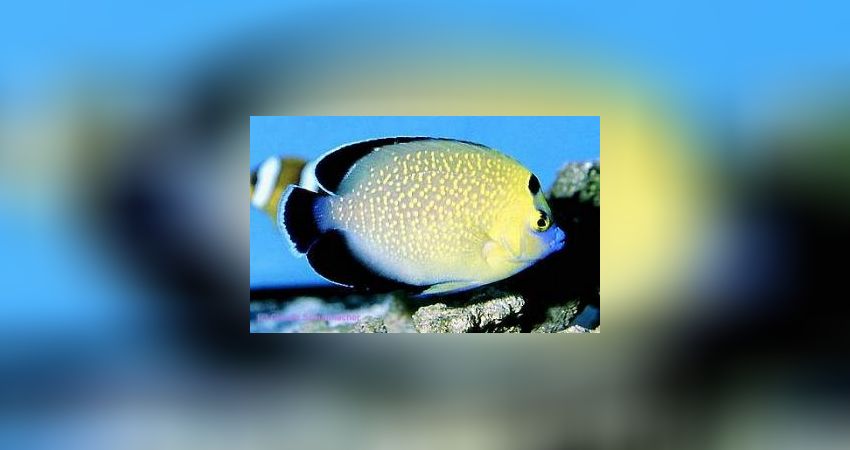
Apolemichthys xanthopunctatus:one of the most beautiful emperors, which can even be kept well. However, it is also inevitable that it will go for large polyps of stony corals. And as is the case with all beautiful fish, it costs a small fortune. But it can be kept well as a pair, like some other species. However, it is often not so easy to add new fish. It also helps to introduce them when they are as small as possible, then they adapt more easily to the aquarium food.
All emperors go less to corals when they have lettuce or algae to pluck all day!!!
Also it is often the case that most juvenile emperors adapt more easily to aquarium life than adults, i.e. large emperors. These are usually already so food-specialised that the chances of them adapting to replacement food are usually not very high. Most great emperors feed on swimmers and other vertebrates that are much more common in the sea than in our aquariums. Unfortunately, this finding says absolutely nothing about whether an angelfish will go after corals later or not.
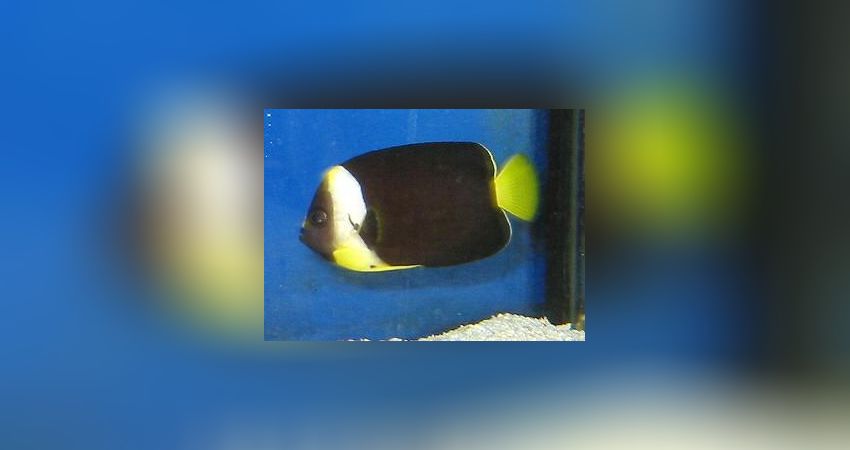
In the picture: Chaetodontoplus meredithi... guaranteed to go for large polyp corals.... and not for the plucking !
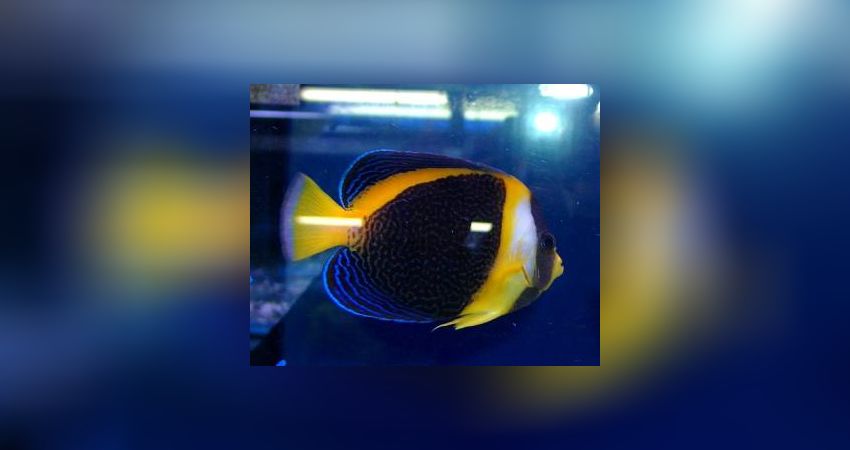
Chaetodontoplus dubouleyi: It too will sooner or later acquire a taste for large polyp corals. However, it keeps well once it has been kept, and if it has been kept very small, keeping it should not be a problem at all. As mentioned above you can do a lot of things, but you can never rule out that an emperor can attack corals and damage them so much that they lose their lives.
However, there are some ways to get an acceptable coral stock even if your purchased emperor does not want to leave some corals. However, you have to distinguish which kind of corals are mostly eaten. Often it is soft and leather corals and of course also large polyped stony corals that are damaged by many large emperors. Smaller polyps are often ignored, which could be a small approach.
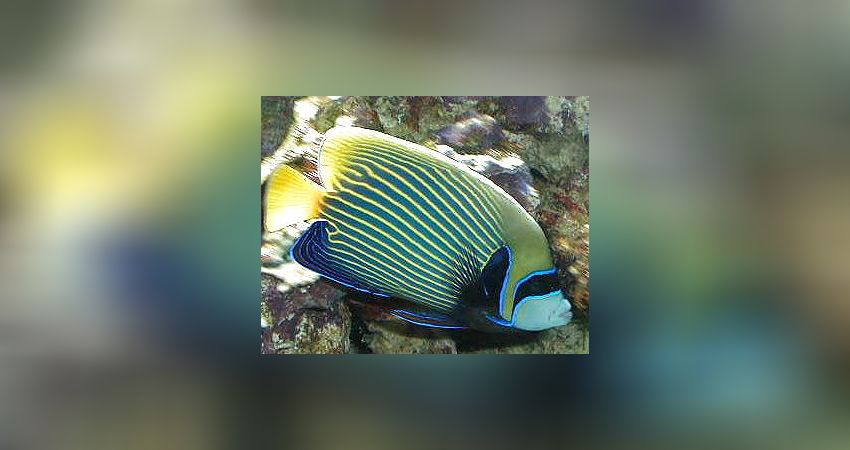
A dream animal for sure, Pomacanthus imperator. Gets too big (40 cm) for one thing and almost certainly eats coral. However, you can limit this to some extent with a good food supply. Offer each emperor something to pluck all day, preferably lettuce ! However, you cannot completely exclude the possibility of attacks.
There are some aquarists who have practised the following and still do well with it. You integrate some corals into the aquarium, preferably those where the chances are good that no attacks will take place. After introducing the angelfish, you will quickly notice which corals are on the menu and can remove them, provided you have a second aquarium or other alternatives. Now take out the affected corals and try others to see if they are left alone.
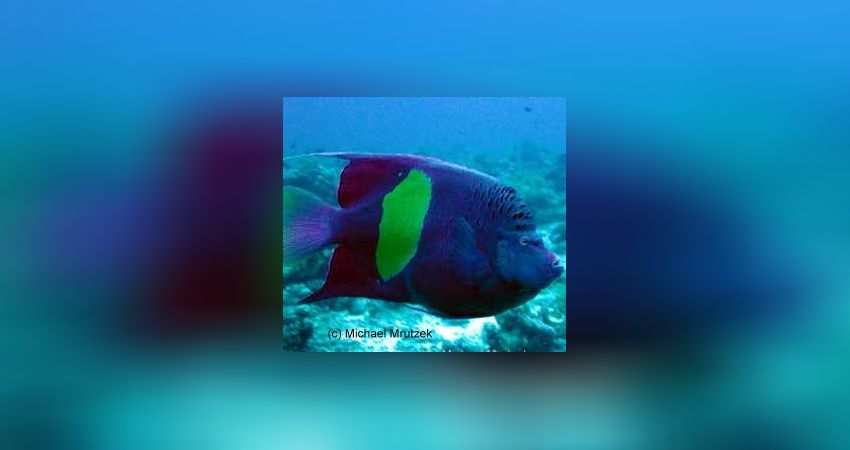
Pomacanthus maculosus: Like all other Pomacanthus species, it too goes after corals as they get older!
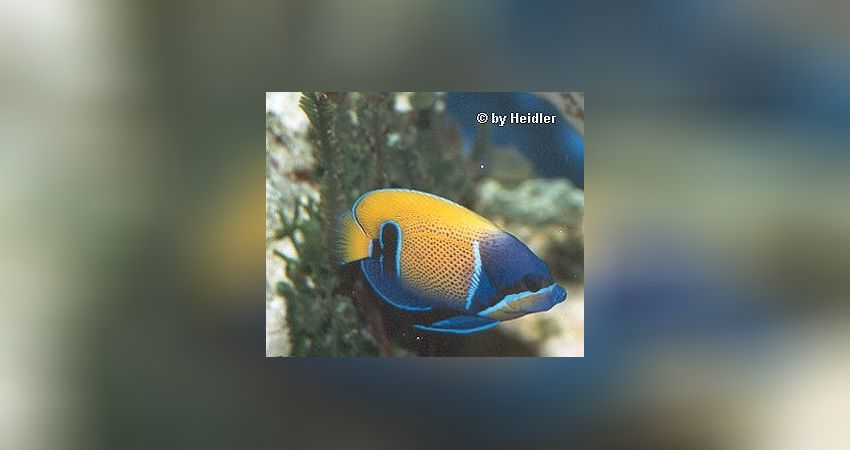
Pomacanthus navarchus: As the German name suggests, a real dream emperor fish. At just under 20 cm, it usually remains pleasantly small for a great emperor, and - as is often reported - does not go anywhere near as close to corals as other great emperor fish. You have to reckon with attacks, but they are usually within limits. It can often be switched to replacement food without any problems, which makes it a species we could definitely try if the tank is big enough. However, there are certainly some here who will not want to follow our recommendation, so please don't blame us :-) But seriously, if we can't talk you out of a Pomacanthus, then we'd advise this one.
.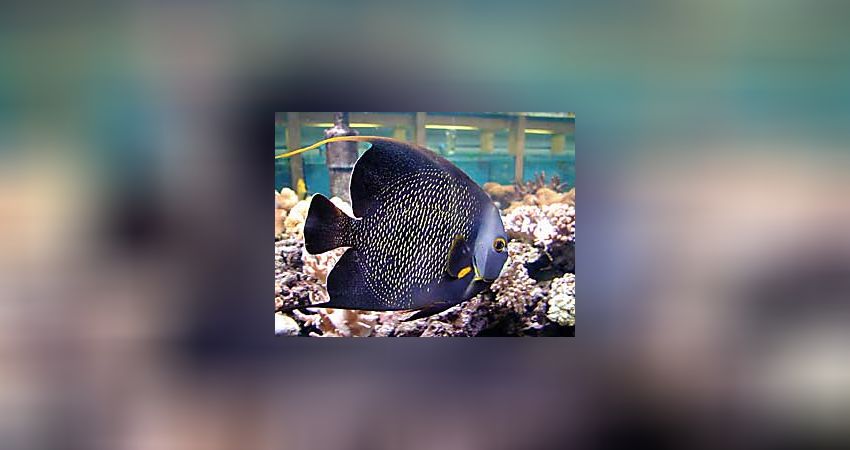
Pomacanthus paru: the French angelfish.... Not only does it grow to well over 40 cm, too large for almost any normal aquarium, it usually reaches this much faster than many other angelfish. If it is well fed, it takes a maximum of three to four years before it is fully grown. This fish has an incredibly high food requirement... It also goes both small and, with increasing age, unfortunately on corals. Otherwise it can be classified as rather insensitive.
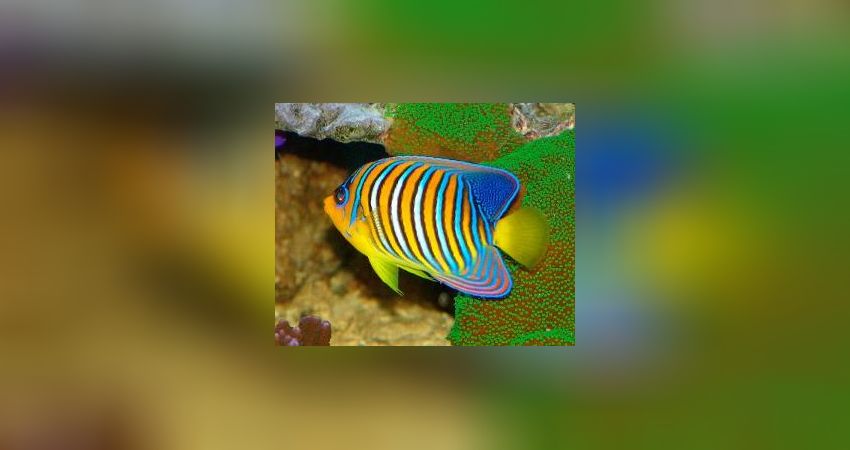
Pygoplites diacanthus:Probably the most beautiful and interesting of the emperor family. Because of its sensitivity it is best not to keep it at all, many üdo not survive the first days, but most of them do not survive half a year. We can only assume that by then he has become too accustomed to his natural food and can no longer cope with the change. It seems to us that the best thing to do is to buy an animal that is already fed by the dealer, preferably frost and flake food. A lot of the fish's problem is probably due to the quality of the housing system and the catch. Can of course pluck at corals and damage them. Soft and leather corals as well as crustose anemones are preferred. Fish that do not eat at the dealer should not be acquired, they are often candidates for death. In contrast to what was recommended earlier, we would keep it in an invertebrate tank, where the chances of survival are much higher than in a pure fish tank. They are often offered in the trade, but unfortunately they don't think about it for long. Often they don't even eat the food. But otherwise the size is optimal for aquariums with a capacity of approx. 1000 litres.
left: Genicanthus bellus, a lyracaiser, female.
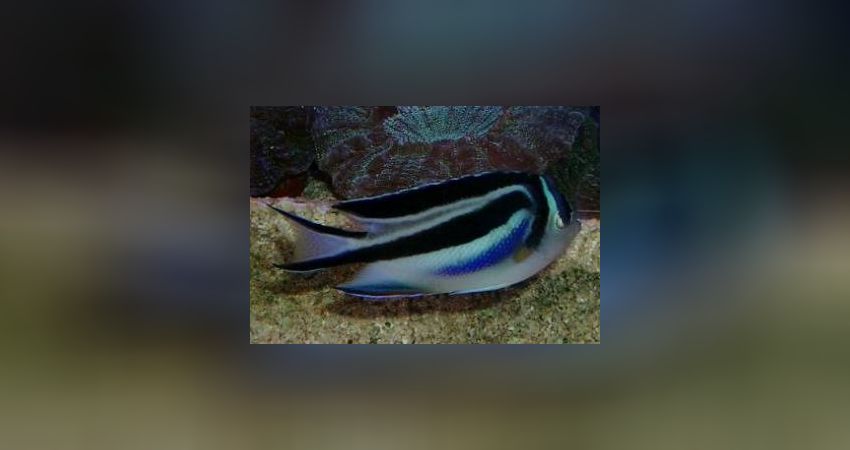
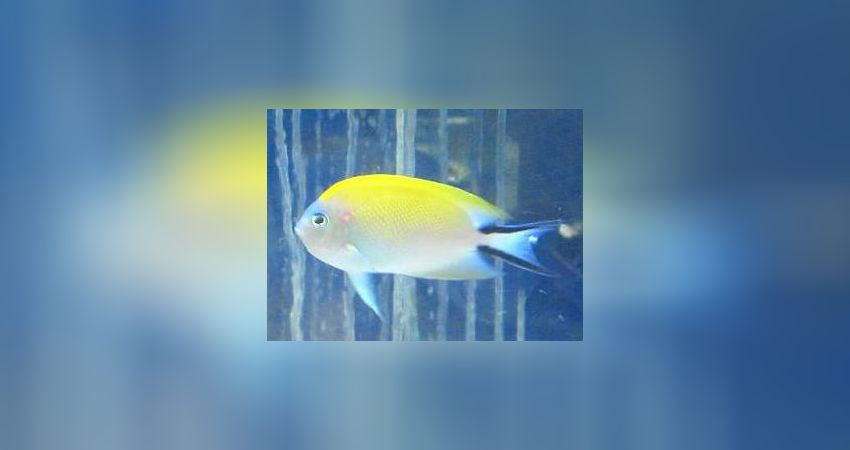
Unfortunately, these beautiful fish are hardly noticed by aquarists, yet they are very interesting fish that feed on larger zooplankton in the sea. Even if you look in the literature, you won't find much about them. But they would be the most excellent fish for the aquarium out of all the species mentioned so far. Of course they are a bit fussy at first, also when it comes to feeding. But when they are acclimatised they are very good to keep, especially they leave the corals alone. They usually do not live directly in the reef but in the open water zone.
We are not aware of any attacks on flower animals, which makes it a much more interesting emperor than the otherwise known coral eaters.
On the picture above on the right you can see a female of Genicanthus melanospilos
You can also easily distinguish between the fishes of the Lyracais, since males and females are generally coloured differently. As a rule, you only need to get two females, then one will become a male in time. We consider Lyracaiser to be absolutely underestimated!
Naturally, it is usually a sensitive fish to begin with, but so are others. Once a Genicanthus is established in the tank, nothing will knock it down in a hurry. Unfortunately, many of them don't do very well in our tanks, which indicates that they have been mistreated after being caught. Often these are drugs, copper or antibiotics that are not tolerated by the Genicanthus species. Usually Genicanthus species are found in the sea in a small to large group, with few males and many females.
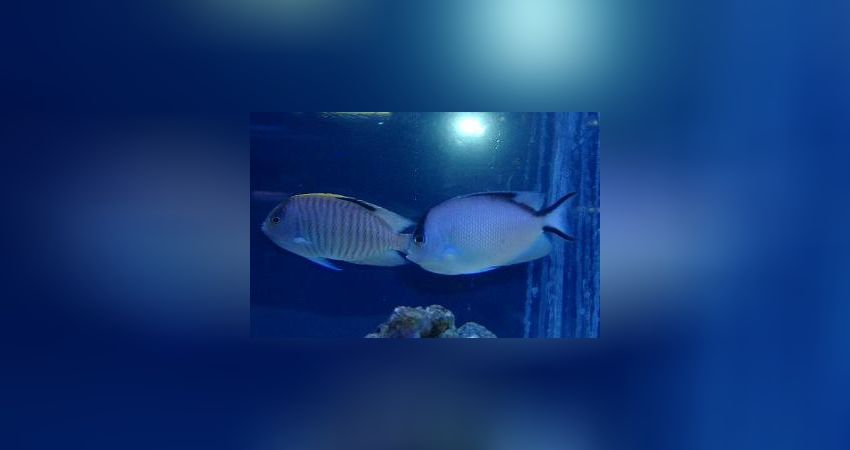
In the picture you can see a small Genicanthus caudovitattus.
Much more species than we can present here can be found in the www.meerwasser-lexikon.de
We hope that we could give you some interesting information with the presentation of the different species? Especially the chapter about angelfishes could fill a whole book :-)
The famous lance for your community tank is indeed only for dwarf angelfishes, as of course also for most lyre angelfishes, which are almost always perfectly suitable for aquarium keeping. Many emperors simply grow too large, and over time problems almost always arise in the community aquarium with regard to the appetite for corals.
Don't forget one thing. You bought the animal, the animal can't help it if it does what it is used to in nature. So you should think twice before buying angelfish, you can make a lot of mistakes when choosing animals!
Frank Diehl, Robert Baur-Kruppas
How do you like this article?
Info
Author

Bookmark
Comments
Topics
Similar articles
- Rette den Hai ???
- Feeding coral fish part 1
- 18 - Ozone
- 29 - Surgeonfishes Part 1
- How a marine aquarium is created Part 1: The Aqua Medic Armatus 400 is supplied.
- 19 - UV clarification
- How a marine aquarium is created Part 26: Goodbye glass lice?
- 23 - Crustose disc anemones and soft corals:
- Fish Catching in the Aquarium | Nyos Floating Fish Trap (Ingenious)
- Nomen est Omen - Was uns wissenschaftliche Namen sagen wollen.
Comments To the top
Please register
In order to be able to write something yourself, you must register in advance.






